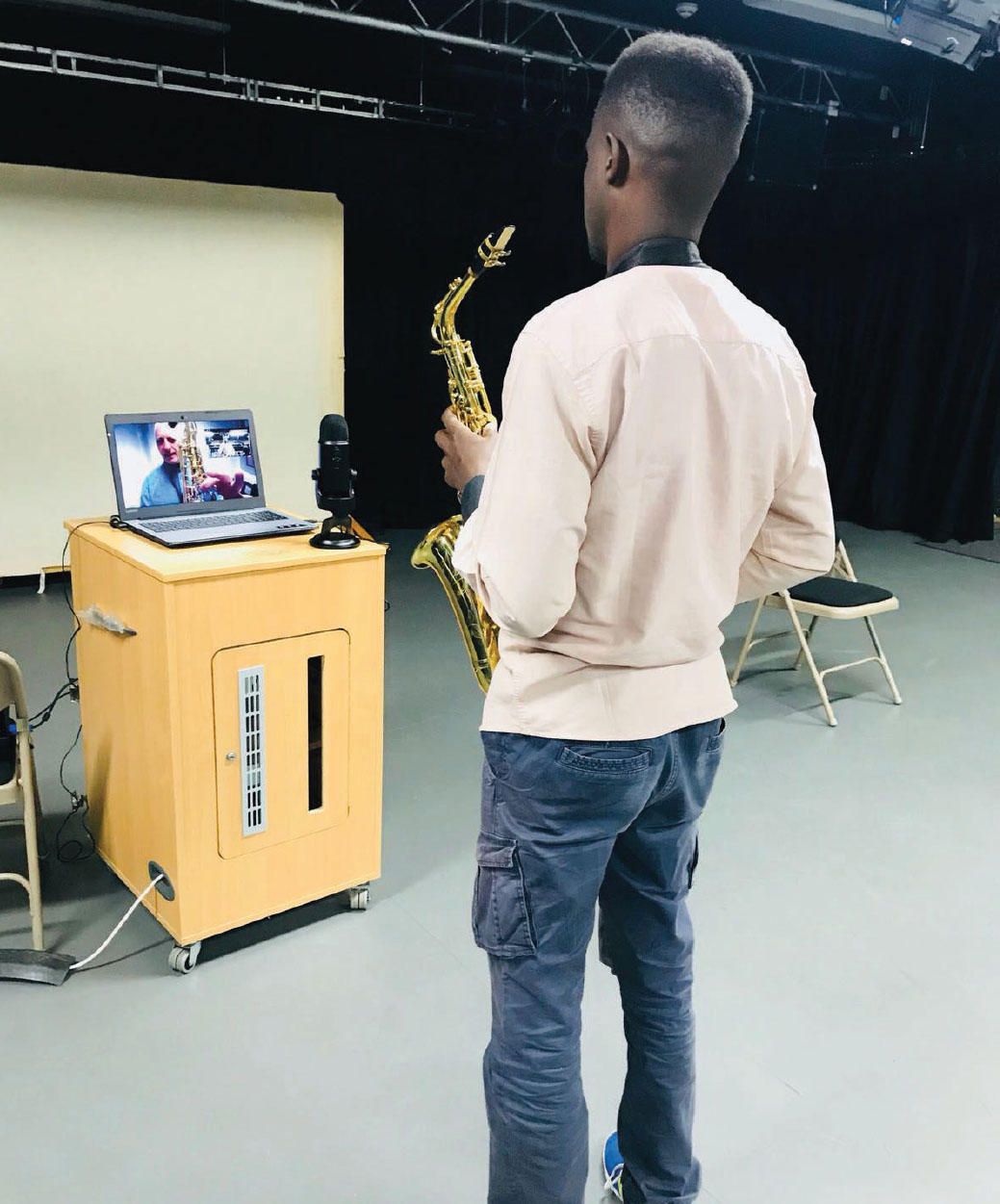
Digital distance learning has been in place – albeit informally – for years. But what are the long-term implications for music education, particularly for teachers? How do you take music participation and learning, which is about collaboration, sharing and communication, and replicate this through a screen? Surrey Arts has been exploring the potential for digital distance learning within their offer, and I've been leading on their programme of testing. This is a work in progress, but through the process we have learned about the benefits, challenges and implications of this approach.
Project overview
A total of 82 remote lessons were delivered to 27 young people across three different educational settings over an academic year. Surrey Arts equipped its Guildford HQ studio base with an Apple iMac and a USB microphone. We experimented with using external cameras but found that the built-in camera on the iMac was most effective for our purposes. Surrey Arts loaned laptops and instruments to students, tutors received a training session, and lessons were regularly monitored. The content of the lessons was down to the tutors.
The project took place across three settings: a further education college with 20 young people aged between 16 to 19, most of whom were vulnerable newly arrived foreign nationals; a secondary school with five Year 7 students who already had proven musical ability; and a private home with two looked-after children (both aged eight) in a foster care setting, one of whom had specific needs (ADHD, ODD, moderate hearing loss, learning difficulties and developmental issues).
For safeguarding reasons, we established generic user accounts on Skype, Google Hangouts and Zoom, and an adult was in the room with the student for every lesson, although this is not necessarily a sustainable approach.

Benefits
This approach successfully enabled young people to participate in a music learning experience that otherwise they would not have been able to access. It supported teachers to be flexible with their timetables, and could teach from anywhere, not just Surrey. All students demonstrated musical progress; they learned how to set-up their instruments and play a number of notes, chords and songs, as well as development of aural skills and musical memory.
We observed much independent learning – despite challenges with the internet connection, students frequently found solutions themselves, or helped each other in groups. Student engagement, focus and concentration were high, particularly in the further education college where the tutor was overwhelmed by the concentration of some of the most disruptive students. The sessions helped students with communication and social interaction skills – for example supporting English language development with certain students. There were no behavioural issues – having their image reflected back on the screen may have led to students self-managing their behaviour, although this is just a speculation.
Challenges
The most consistent challenge to the project was the internet connection and bandwidth. Time-lagging affected how the tutors wanted to teach – they weren't able to play along with students for example. Freezing screens and poor visual quality meant tutors couldn't always see fingers on keys and strings. Sound interference got in the way of communication, particularly for those young people with language difficulties.
Teaching and learning tips
Face-to-face sessions at the beginning and end of the teaching process were important for building rapport and to bring the lessons to a productive end point. Teaching style and dynamic is key: being clear, calm, repetitive, encouraging, friendly and steady paced. Tutors commented on how important it was to be aware of body language, and to be able to read the students through the screen. There is less room for spontaneity with using resources (backing tracks, for example). We established a shared Google Drive for tutors to upload resources in advance of each lesson. As playing along with students is difficult, tutors incorporated call and response, copying, musical modelling, and visual aids.
Potential
Digital distance learning, delivered by music services, has the potential to enhance rather than replace existing and new offers. It has particular value with opening up music learning for young people in transition, those who can't access existing services, and those who need additional expertise with a specific area of music learning. Current bandwidth and firewall restrictions in schools and institutions are challenges to this being an exclusive approach, however this will improve as technology and organisational infrastructure evolves.
This approach develops digital literacy skills and supports understanding of interacting safely online, as well as linking to a real-world learning approach. Surrey Arts is one of a number of Music Education Hubs working with NYMAZ (North Yorkshire Music Action Zone) to explore new contexts for digital distance learning, following their pioneering work in this field through the ‘Connect: Resound’ project.
Teaching remotely via Skype and similar has huge potential and has wide-ranging implications for rural schools and teachers of endangered species instruments. We would love to hear about examples of online teaching – please email tim.hallas@hertsmusicservice.org.uk with any examples (either positive and negative) of your work.
See tinyurl.com/mt10-techcol for more information, resources and training opportunities.








